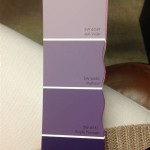What Color to Paint Bedroom Ceiling: A Comprehensive Guide
The selection of a ceiling color for a bedroom often receives less attention than wall color selection. However, the ceiling, also known as the “fifth wall,” plays a significant role in the overall ambiance and perceived spatial dimensions of the room. The color chosen for the ceiling can impact mood, light reflection, and the feeling of spaciousness within the bedroom. This article provides a comprehensive guide to selecting appropriate ceiling colors for bedrooms, considering various factors that influence the final aesthetic and functional outcome.
A common practice is to paint the ceiling white. This is generally a safe and effective approach, particularly in rooms with limited natural light or lower ceiling heights. White reflects light effectively, making the room appear brighter and more open. However, white is not the only viable option, and exploring alternative colors can lead to a more personalized and visually interesting space. The appropriateness of any given color depends on factors such as the room's size, the amount of natural light it receives, the existing wall color, and the desired atmosphere.
Before committing to a specific color, it is essential to consider the psychological effects associated with different hues. Colors evoke emotions and influence perception. Understanding these effects can help in creating a bedroom environment that promotes relaxation and restful sleep. For example, cool colors such as blues and greens are often associated with tranquility and calmness, while warmer colors like yellows and oranges can create a more energetic and stimulating atmosphere. The choice should align with the intended purpose of the bedroom as a sanctuary for rest and rejuvenation.
Understanding the Impact of Light and Ceiling Height
The amount of natural and artificial light in a bedroom is a crucial factor when selecting a ceiling color. Rooms with ample natural light can generally accommodate darker or more saturated colors without feeling oppressive. However, in rooms with limited natural light, lighter colors are preferable to maximize brightness. Reflectance values, often indicated as Light Reflectance Value (LRV), describe the amount of light a color reflects. Higher LRV values equate to greater light reflection, making lighter colors more effective in brightening a space.
Ceiling height also plays a crucial role. In rooms with low ceilings, using a lighter ceiling color than the walls can create the illusion of greater height. This is because the lighter ceiling reflects more light, making it appear to recede. Conversely, in rooms with high ceilings, using a darker color on the ceiling can visually lower the ceiling, creating a sense of intimacy and coziness. This approach, however, should be carefully considered, as it can also make the room feel smaller overall.
Gloss level is another aspect related to light reflection. Ceilings are generally painted with a matte or flat finish to minimize imperfections and reduce glare. Higher gloss levels, such as semi-gloss or gloss, reflect more light but can also highlight any unevenness in the ceiling surface. Therefore, unless the ceiling is perfectly smooth, a matte finish is typically recommended.
Exploring Different Color Palette Options for Bedroom Ceilings
Beyond simply considering light reflection and ceiling height, the overall color palette of the bedroom should be carefully considered when selecting a ceiling color. The goal is to create a cohesive and harmonious aesthetic that promotes relaxation and comfort. The color of the walls, flooring, and furniture should all be taken into account.
One option is to paint the ceiling the same color as the walls. This creates a seamless and unified look, which can be particularly effective in smaller bedrooms, as it blurs the lines between the walls and ceiling, making the room feel larger. However, this approach can also make the room feel somewhat monotonous if the color is too dark or overpowering. In this case, a lighter shade of the wall color can be used on the ceiling.
Another option is to choose a complementary color for the ceiling. Complementary colors are those that are opposite each other on the color wheel, such as blue and orange, or green and red. Using complementary colors can create a visually stimulating and dynamic space. However, it is important to use complementary colors sparingly, as they can be overwhelming if not balanced properly. A more muted or toned-down version of the complementary color is often a safer and more aesthetically pleasing choice for a bedroom ceiling.
Analogous colors, which are colors that are adjacent to each other on the color wheel, such as blue and green, or yellow and orange, can also be used to create a harmonious and pleasing color scheme. Using analogous colors can create a sense of calm and tranquility, which is ideal for a bedroom. The ceiling can be painted a lighter or darker shade of one of the analogous colors used on the walls.
Neutral colors, such as gray, beige, and cream, are versatile options for bedroom ceilings. They work well with a wide range of wall colors and décor styles. Gray is a particularly popular choice, as it is a sophisticated and calming color that can create a sense of serenity. Beige and cream are also good options for creating a warm and inviting atmosphere. When using neutral colors, it is important to consider the undertones of the color to ensure that it complements the wall color and other elements in the room. For example, a gray with warm undertones may clash with a wall color that has cool undertones.
For a more dramatic effect, consider using a darker color on the ceiling. Dark colors can create a sense of intimacy and luxury, but they should be used with caution, as they can also make the room feel smaller and darker. If using a dark color on the ceiling, it is important to ensure that the room has ample natural or artificial light to prevent it from feeling oppressive. Darker ceilings work best in rooms with high ceilings and large windows.
Specific Color Recommendations and Their Psychological Effects
Here are some specific color recommendations for bedroom ceilings, along with their associated psychological effects:
*White:
A classic and versatile choice that reflects light and creates a sense of spaciousness. Promotes cleanliness, purity, and neutrality. *Light Blue:
A calming and relaxing color that evokes feelings of peace and tranquility. Ideal for promoting restful sleep. *Light Green:
Another calming and refreshing color that is associated with nature and renewal. Can help to reduce stress and anxiety. *Lavender:
A soft and romantic color that promotes relaxation and creativity. *Gray:
A sophisticated and versatile neutral that can create a sense of serenity and calm. The specific shade dictates the overall feel, with lighter grays feeling airier and darker grays more intimate. *Beige/Cream:
Warm and inviting neutrals that create a cozy and comfortable atmosphere. *Pale Yellow:
A cheerful and optimistic color that can brighten up a room. However, it should be used sparingly, as too much yellow can be overwhelming. *Dark Blue/Navy:
Creates a dramatic and intimate atmosphere; best suited for bedrooms with ample natural light and high ceilings. Promotes a sense of depth and sophistication. *Charcoal Gray:
A modern and sophisticated choice that creates a dramatic and intimate atmosphere. Requires careful consideration of lighting to avoid making the room feel too dark.Ultimately, the best color for a bedroom ceiling is a matter of personal preference. It is important to experiment with different colors and shades to find one that creates the desired atmosphere and complements the overall décor of the room. Consider painting a large sample of the color on the ceiling to see how it looks in different lighting conditions before committing to painting the entire ceiling.
Beyond paint, consider other ceiling treatments such as wallpaper or textured finishes. Wallpaper can add visual interest and pattern to the ceiling, while textured finishes can add depth and dimension. These options are more labor-intensive than painting but can create a unique and impactful look.
The type of paint used is also important. Use a high-quality paint specifically designed for ceilings. These paints typically have a flat finish to minimize glare and hide imperfections. They may also contain additives to prevent mildew and mold growth, which is particularly important in bathrooms and other rooms with high humidity.
Proper preparation is essential for a successful ceiling painting project. Clean the ceiling thoroughly to remove dust, dirt, and cobwebs. Repair any cracks or holes with spackle or joint compound. Prime the ceiling with a suitable primer to ensure that the paint adheres properly and to prevent stains from bleeding through. Use painter's tape to protect the walls and trim. Apply the paint in thin, even coats, using a roller or brush. Allow the paint to dry completely between coats. Remove the painter's tape carefully to avoid damaging the walls.
By carefully considering these factors, one can make an informed decision about what color to paint a bedroom ceiling, resulting in a space that is both aesthetically pleasing and conducive to rest and relaxation.

Weekend Project Colourful Ceiling Paint Ideas Dulux

6 Ceiling Paint Color Ideas Inspiration Benjamin Moore

Selecting The Best Ceiling Color In Waesha Wi

6 Painted Ceiling Designs And Tips For Painting Ceilings White Wall Bedroom Interior Colors

6 Paint Colors That Make A Splash On Ceilings Home Grey Ceiling Bedroom Inspirations

6 Ceiling Paint Color Ideas Inspiration Benjamin Moore

How To Paint Your Ceiling Perfect The Painted Trend

Should I Paint My Ceiling What Color Williams Painting

How To Get Your Ceiling Paint Color Right

Best Ceiling Paint Colour Ideas In 2024
Related Posts








